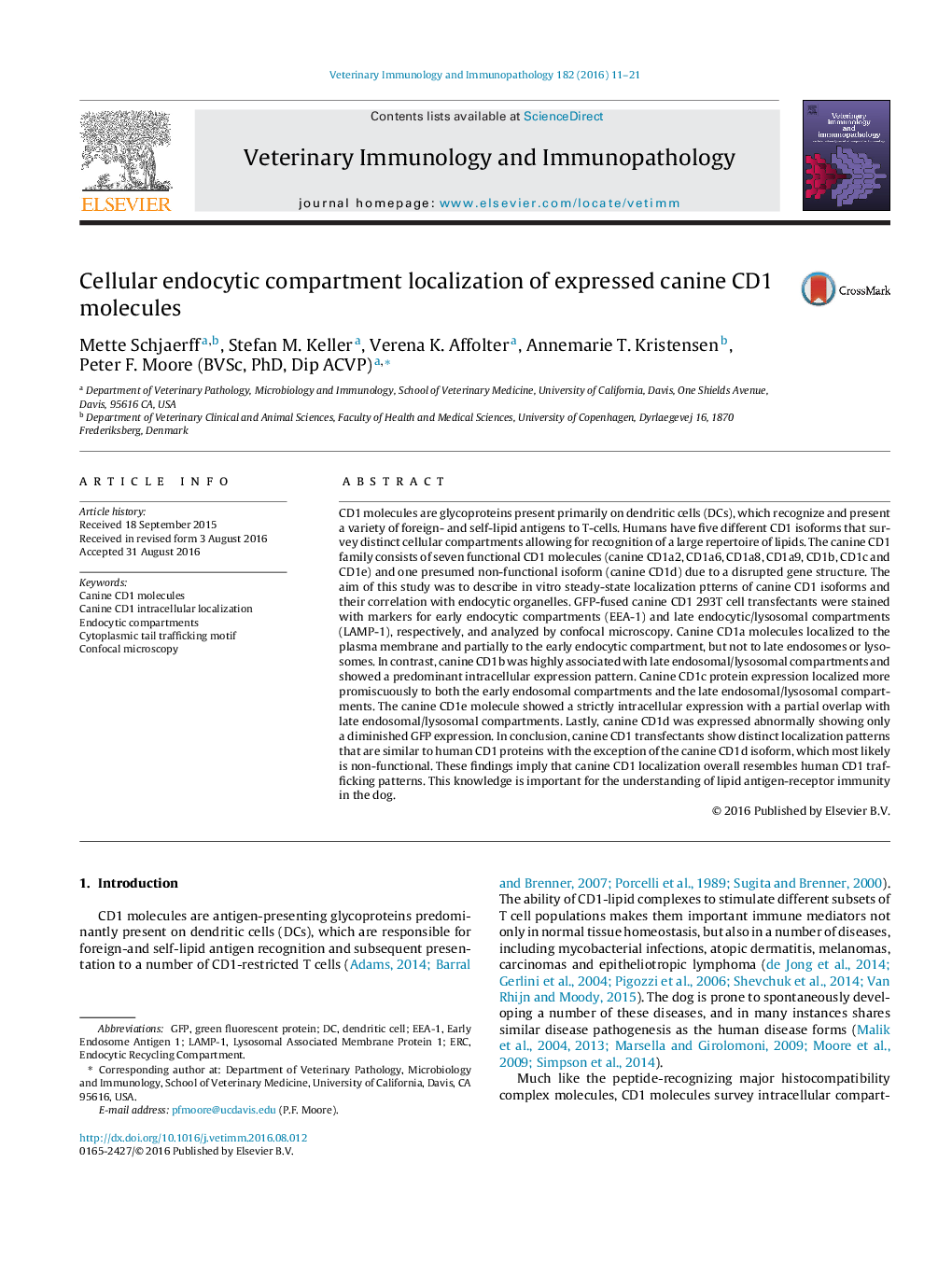| کد مقاله | کد نشریه | سال انتشار | مقاله انگلیسی | نسخه تمام متن |
|---|---|---|---|---|
| 5544755 | 1555002 | 2016 | 11 صفحه PDF | دانلود رایگان |

- Recombinant canine CD1 molecules localized to different cellular compartments.
- Canine CD1 isoforms showed similar endocytic localization as their human counterparts.
- Canine CD1d showed an abnormal protein translation.
CD1 molecules are glycoproteins present primarily on dendritic cells (DCs), which recognize and present a variety of foreign- and self-lipid antigens to T-cells. Humans have five different CD1 isoforms that survey distinct cellular compartments allowing for recognition of a large repertoire of lipids. The canine CD1 family consists of seven functional CD1 molecules (canine CD1a2, CD1a6, CD1a8, CD1a9, CD1b, CD1c and CD1e) and one presumed non-functional isoform (canine CD1d) due to a disrupted gene structure. The aim of this study was to describe in vitro steady-state localization ptterns of canine CD1 isoforms and their correlation with endocytic organelles. GFP-fused canine CD1 293T cell transfectants were stained with markers for early endocytic compartments (EEA-1) and late endocytic/lysosomal compartments (LAMP-1), respectively, and analyzed by confocal microscopy. Canine CD1a molecules localized to the plasma membrane and partially to the early endocytic compartment, but not to late endosomes or lysosomes. In contrast, canine CD1b was highly associated with late endosomal/lysosomal compartments and showed a predominant intracellular expression pattern. Canine CD1c protein expression localized more promiscuously to both the early endosomal compartments and the late endosomal/lysosomal compartments. The canine CD1e molecule showed a strictly intracellular expression with a partial overlap with late endosomal/lysosomal compartments. Lastly, canine CD1d was expressed abnormally showing only a diminished GFP expression. In conclusion, canine CD1 transfectants show distinct localization patterns that are similar to human CD1 proteins with the exception of the canine CD1d isoform, which most likely is non-functional. These findings imply that canine CD1 localization overall resembles human CD1 trafficking patterns. This knowledge is important for the understanding of lipid antigen-receptor immunity in the dog.
Journal: Veterinary Immunology and Immunopathology - Volume 182, December 2016, Pages 11-21